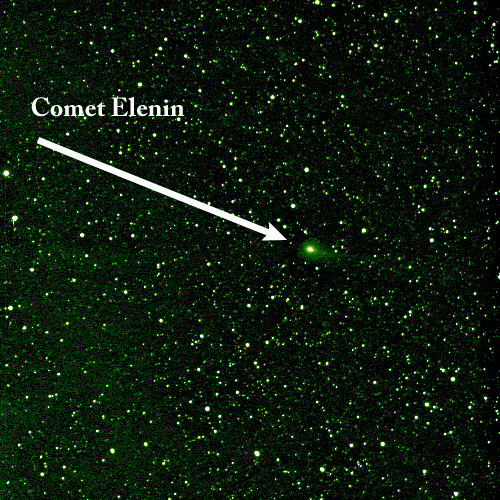 |
| Credit : NASA |
Often, comets are portrayed as harbingers of gloom and doom in movies and on television, but most pose no threat to Earth. Comet Elenin, the latest comet to visit our inner solar system, is no exception. Elenin will pass about 22 million miles (35 million kilometers) from Earth during its closest approach on Oct. 16, 2011.
Also known by its astronomical name C/2010 X1, the comet was first detected on Dec. 10, 2010 by Leonid Elenin, an observer in Lyubertsy, Russia, who made the discovery "remotely" using an observatory in New Mexico. At that time, Elenin was about 401 million miles (647 million kilometers) from Earth. Since its discovery, Comet Elenin has – as all comets do – closed the distance to Earth's vicinity as it makes its way closer to perihelion, its closest point to the sun.
NASA scientists have taken time over the last several months to answer your questions. Compiled below are the some of the most popular questions, with answers from Don Yeomans of NASA's Near-Earth Object Program Office at NASA's Jet Propulsion Laboratory in Pasadena, Calif., and David Morrison of the NASA Astrobiology Institute at the NASA Ames Research Center in Moffett Field, Calif.





















